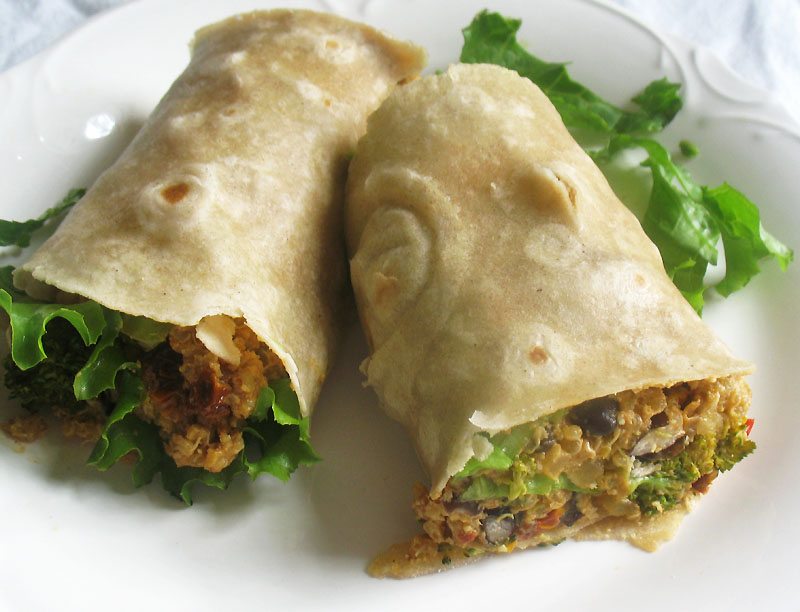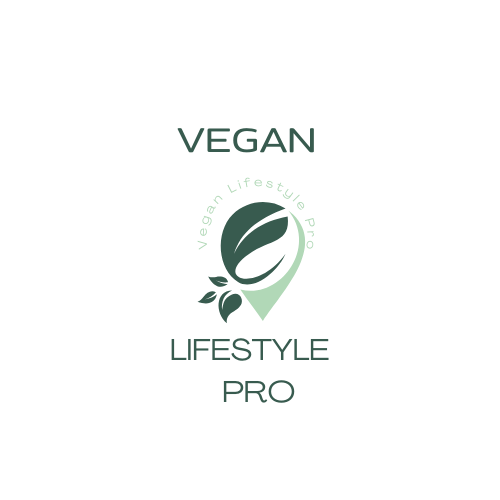The Ultimate Guide to Embracing a Vegan Lifestyle: How to Go Green and Thrive in a Plant Based World
In today’s world, where sustainability and ethical choices are gaining more spotlight, going green and thriving in a plant based world has become increasingly popular. This comprehensive guide will provide you with all the information you need to make the transition to a vegan lifestyle, from understanding the core principles to incorporating plant-based alternatives into your diet.
With our step-by-step approach, we will help you navigate the vast world of veganism, debunk common misconceptions, and provide you with practical tips for maintaining a balanced and satisfying diet. Whether you’re concerned about animal welfare, the environment, or seeking to improve your health, embracing a vegan lifestyle can offer a multitude of benefits.
From exploring new recipes and cooking techniques to understanding the nutritional aspects of plant-based eating, this guide covers it all. Discover how to shop for vegan-friendly products, find local restaurants and eateries that cater to a vegan diet, and overcome any challenges you may encounter along the way.
Are you ready to embark on a journey towards a greener and more compassionate lifestyle? Let’s dive in and embrace the vegan lifestyle together.
Benefits of adopting a vegan lifestyle
Adopting a vegan lifestyle can have numerous benefits for your health, the environment, and animal welfare. Many people choose to go vegan due to ethical reasons, as they believe in the rights of animals and want to minimize their impact on their suffering. By eliminating animal products from your diet, you are contributing to reducing the demand for animal agriculture and its associated cruelty.
From an environmental perspective, animal agriculture is a major contributor to greenhouse gas emissions, deforestation, and water pollution. By adopting a vegan lifestyle, you can significantly reduce your carbon footprint and help combat climate change. Plant-based diets require fewer resources, such as land and water, making them more sustainable and environmentally friendly.
On a personal level, a well-planned vegan diet can provide you with all the necessary nutrients for optimal health. Studies have shown that vegans often have lower risks of developing chronic diseases, such as heart disease, diabetes, and certain types of cancer. A vegan diet can also help with weight management, as plant-based foods tend to be lower in calories and higher in fiber, keeping you fuller for longer.
Understanding the environmental impact of animal agriculture
To fully understand the environmental impact of animal agriculture, it’s essential to delve into the numbers. Livestock farming is responsible for approximately 14.5% of global greenhouse gas emissions, making it a significant contributor to climate change. The production of meat, dairy, and eggs requires vast amounts of land, water, and feed, putting tremendous pressure on natural resources.
Animal agriculture also plays a role in deforestation. Large areas of forests are cleared to make way for grazing land or to grow feed crops for livestock. This deforestation not only contributes to the loss of biodiversity but also reduces the Earth’s capacity to absorb carbon dioxide, further exacerbating climate change.
Additionally, the intensive farming practices often employed in animal agriculture lead to water pollution. The excessive use of fertilizers and pesticides on feed crops contaminates water sources, causing harm to aquatic ecosystems and human health.
By choosing a vegan lifestyle, you can help mitigate these environmental issues. By reducing the demand for animal products, you are directly contributing to the preservation of natural resources, the reduction of greenhouse gas emissions, and the protection of our planet’s biodiversity.
Transitioning to a vegan diet
Transitioning to a vegan diet may seem overwhelming at first, but with the right approach, it can be a smooth and enjoyable process. Start by educating yourself about the principles of veganism and the reasons why you want to make this change. This will help you stay motivated and committed to your new lifestyle.
Take it step by step. Begin by gradually reducing your consumption of animal products and incorporating more plant-based foods into your meals. Experiment with new recipes and flavors, and don’t be afraid to try different fruits, vegetables, grains, and legumes. There are countless delicious vegan recipes available online, so embrace the opportunity to explore and discover new culinary horizons.
It’s also important to ensure you are getting all the necessary nutrients in your diet. While a well-planned vegan diet can meet all your nutritional needs, it’s crucial to pay attention to certain nutrients that are commonly found in animal products. These include protein, iron, calcium, vitamin B12, and omega-3 fatty acids. Incorporating a variety of plant-based protein sources, such as legumes, tofu, tempeh, and quinoa, can help ensure you meet your protein requirements. Leafy greens, nuts, and seeds are excellent sources of iron and calcium. Consider taking a vitamin B12 supplement, as this nutrient is mainly found in animal products. Omega-3 fatty acids can be obtained from flaxseeds, chia seeds, walnuts, and algae-based supplements.

Plant-based nutrition: Essential nutrients for vegans
A well-planned vegan diet can provide you with all the essential nutrients your body needs to thrive. By understanding the key nutrients and incorporating a variety of plant-based foods into your meals, you can ensure optimal health and well-being.
Protein is often a concern for those considering a vegan lifestyle, but there are plenty of plant-based sources of protein to choose from. Legumes, such as lentils, chickpeas, and black beans, are excellent sources of protein. Tofu, tempeh, and seitan are also protein-rich options. Quinoa and other whole grains, as well as nuts and seeds, can also contribute to your protein intake.
Iron is another essential nutrient that can be obtained from plant-based sources. While plant-based iron is not as easily absorbed as iron from animal products, pairing iron-rich foods with sources of vitamin C can enhance absorption. Leafy greens, such as spinach and kale, legumes, dried fruits, and fortified cereals are all good sources of iron.
Calcium is important for maintaining strong bones and teeth. While dairy products are a common source of calcium, there are plenty of plant-based alternatives available. Calcium-rich plant-based foods include tofu, fortified plant-based milks, leafy greens, and sesame seeds.
Vitamin B12 is primarily found in animal products, so it’s important for vegans to ensure they are getting an adequate intake. Consider taking a B12 supplement or consuming fortified foods, such as plant-based milks, breakfast cereals, and nutritional yeast.
Omega-3 fatty acids are essential for brain health and reducing inflammation. While fish is a common source of omega-3s, they can also be obtained from plant-based sources such as flaxseeds, chia seeds, hemp seeds, and walnuts. Algae-based supplements are also available for those who prefer a supplement form.
Vegan cooking and meal planning tips
Cooking vegan meals can be both exciting and rewarding. Here are some tips to help you get started and make the most out of your plant-based culinary adventures:
- Experiment with different flavors and spices. Herbs, spices, and marinades can add depth and complexity to your dishes, making them more enjoyable and satisfying.
- Don’t be afraid to try new ingredients. There is a wide variety of plant-based foods available, so embrace the opportunity to discover new flavors and textures.
- Plan your meals ahead of time. Meal planning can save you time and ensure you have all the necessary ingredients on hand. Look for recipe inspiration and create a shopping list to make grocery shopping easier.
- Batch cook and meal prep. Preparing large batches of meals and storing them in the fridge or freezer can save you time and make it easier to stick to your vegan diet on busy days.
- Get creative with plant-based substitutes. There are numerous meat substitutes, dairy-free milks, cheeses, and even vegan eggs available in stores. Experiment with different brands and find your favorites.
- Explore international cuisines. Many cuisines around the world have a rich tradition of plant-based dishes. From Indian curries to Middle Eastern falafel, there are endless options to explore.
- Join online vegan communities. Connecting with like-minded individuals can provide support, recipe ideas, and a sense of community. There are many online platforms where you can find fellow vegans to share your journey with.
Exploring vegan alternatives: Meat substitutes, dairy-free products, and more
One of the biggest misconceptions about veganism is that it’s a restrictive diet. However, with the growing popularity of plant-based eating, there are now countless vegan alternatives available for almost every animal product imaginable.
When it comes to meat substitutes, the options are vast. Plant-based burgers, sausages, chicken nuggets, and even fish alternatives are becoming increasingly realistic in taste and texture. These products are often made from ingredients such as soy, wheat, peas, or mushrooms, and can be found in many grocery stores and restaurants.
Dairy-free products have also come a long way. There are now a wide variety of plant-based milks, such as almond, soy, oat, and coconut milk, which can be used in place of cow’s milk in recipes and beverages. Vegan cheeses made from nuts, soy, or coconut oil are also available, offering a range of flavors and textures.
In addition to meat and dairy substitutes, there are also alternatives for eggs, honey, and other animal-derived ingredients. Chickpea flour or flaxseed meal can be used as egg replacers in baking, while maple syrup or agave nectar can be used as sweeteners instead of honey.
Veganism and sustainability: Reducing waste and eco-friendly practices
Embracing a vegan lifestyle goes beyond just the food on your plate. It’s also about adopting sustainable practices and reducing waste in all aspects of your life. Here are some eco-friendly practices you can incorporate into your vegan journey:
- Reduce single-use plastics. Invest in reusable shopping bags, water bottles, and food containers to minimize your use of disposable plastic items.
- Choose eco-friendly household and personal care products. Look for cruelty-free and vegan options that are not tested on animals and have minimal environmental impact.
- Compost food scraps. Instead of throwing away food waste, consider composting it to create nutrient-rich soil for your garden or potted plants.
- Support local and organic farmers. By purchasing locally grown and organic produce, you are supporting sustainable farming practices and reducing the carbon footprint associated with long-distance transportation.
- Reduce food waste. Plan your meals carefully, store food properly, and find creative ways to use leftovers to minimize food waste.
- Opt for sustainable fashion. Consider purchasing clothing made from eco-friendly materials, such as organic cotton, bamboo, or recycled fabrics. Avoid products made from animal-derived materials, such as leather or fur.
By incorporating these practices into your vegan lifestyle, you can further reduce your environmental impact and contribute to a more sustainable future.
Finding vegan-friendly restaurants and resources
As veganism continues to grow in popularity, finding vegan-friendly restaurants and resources has become easier than ever. Here are some tips to help you navigate the vegan scene and discover new culinary experiences:
- Research local vegan-friendly restaurants. Many cities now have dedicated vegan or vegetarian eateries that offer a wide range of plant-based options. Look for online directories or review platforms that specialize in vegan dining experiences.
- Check out ethnic cuisines. Indian, Thai, Ethiopian, and Middle Eastern cuisines often have a variety of vegan dishes. Explore these cuisines to discover new flavors and dining options.
- Ask for vegan options at non-vegan restaurants. Many non-vegan restaurants are now accommodating vegan diners by offering plant-based alternatives or modifying existing dishes to make them vegan-friendly. Don’t be afraid to inquire about vegan options when dining out.
- Attend vegan food festivals and events. Vegan food festivals are becoming increasingly popular and offer a great opportunity to try a wide variety of plant-based dishes from different vendors in one place.
- Join online vegan communities. Online platforms, such as social media groups or vegan blogs, can provide you with recommendations, reviews, and tips from fellow vegans in your area.
By utilizing these resources, you can expand your vegan dining options and discover new culinary gems in your local community.
Conclusion: Embracing a vegan lifestyle for a healthier planet and future
Congratulations on reaching the end of this ultimate guide to embracing a vegan lifestyle! By incorporating the ideas and tips shared in this guide, you are well on your way to thriving in a plant-based world.
Embracing a vegan lifestyle offers numerous benefits for your health, the environment, and animal welfare. By reducing your consumption of animal products, you are making a positive impact on the planet and contributing to a more sustainable future.
Transitioning to a vegan diet is a journey, and it’s okay to take it at your own pace. Experiment with new recipes, explore different flavors, and connect with the vegan community for support and inspiration.
So, are you ready to embrace the vegan lifestyle and make a difference? Start today and join the growing movement towards a greener and more compassionate world. The power to change is in your hands, and the impact you can make is immeasurable. Let’s go green and thrive in a plant-based world together!

